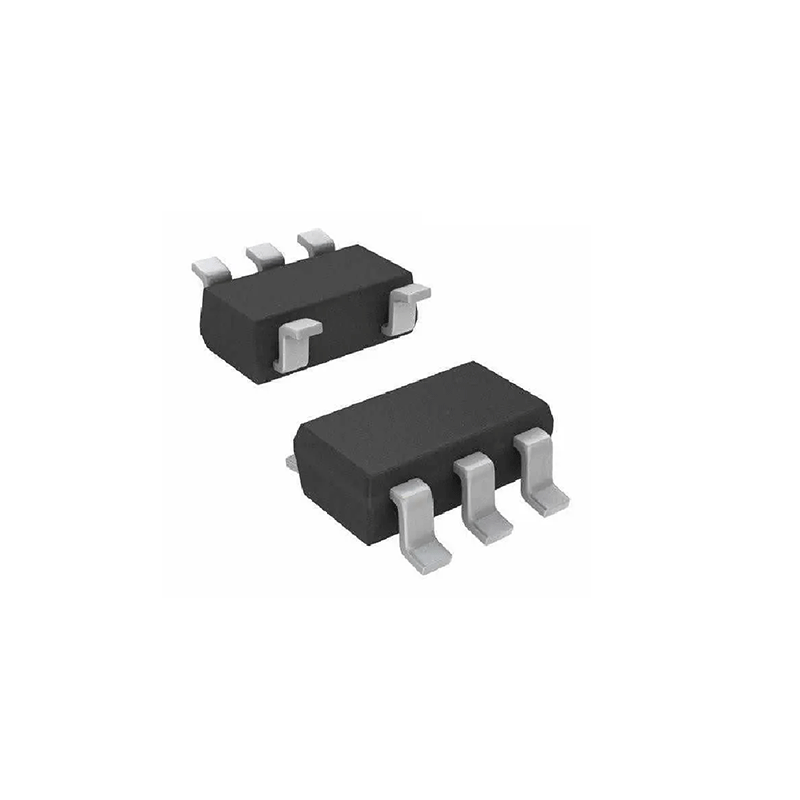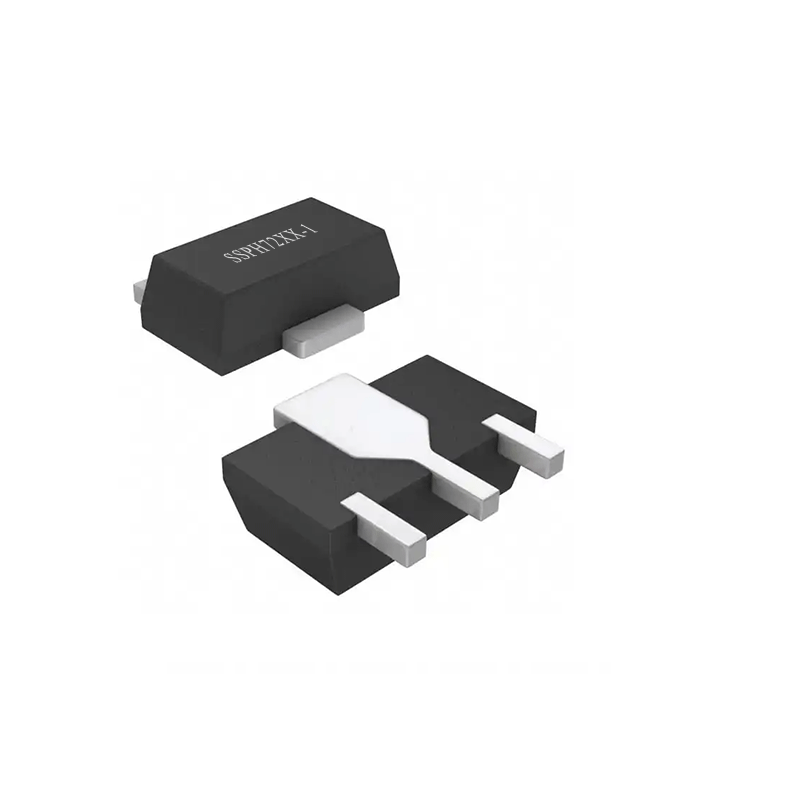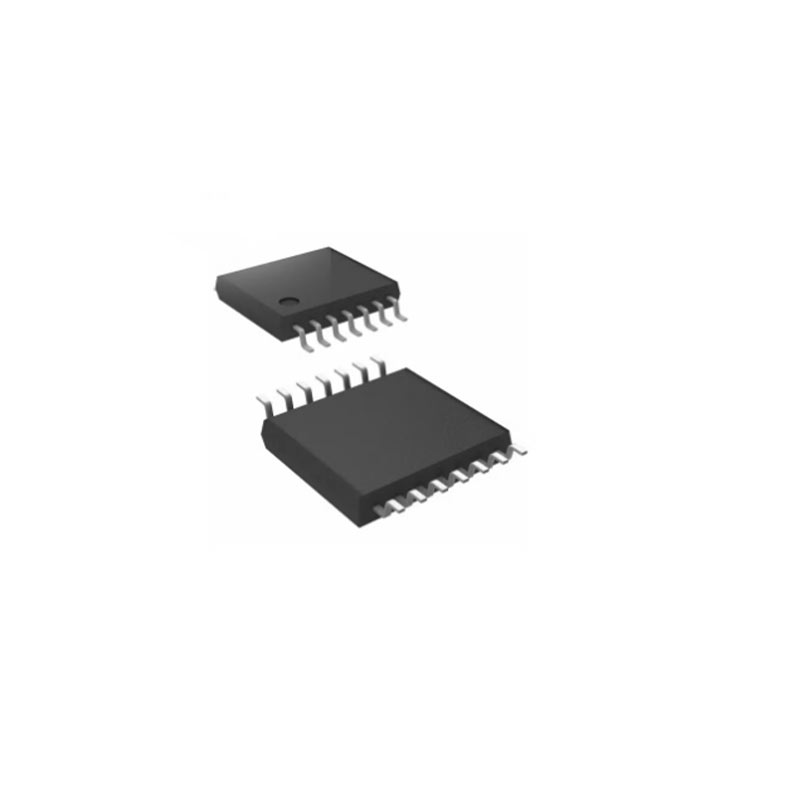1.The national team is rich, and the Chinese integrated circuit welcomes the highlight moment again
The domestic integrated circuit industry once again ushered in the highlight moment, the big fund three heavy shots, within one day (December 31, 2024) invested in two funds, the total amount of capital exceeded 160 billion, can be described as “rich”.
It is reported that the two funds invested in the third phase of the fund are Huaxin Dingxin (Beijing) Equity Investment Fund (limited partnership) (hereinafter referred to as “Huaxin Dingxin”) and SDIC Jixin (Beijing) Equity Investment Fund (limited partnership) (hereinafter referred to as “SDIC Jixin”).
The registered capital of State Investment Jixin is 71.071 billion yuan, of which the State fund invested 71 billion yuan in the third phase, and the State Investment Venture Capital invested 71 million yuan as the executive partner, accounting for 0.0999%. The business scope is also engaged in equity investment, investment management, asset management and other activities by private funds.
Among them, the registered capital of Huaxin New reached 93.093 billion yuan, of which, the National Grand Fund invested 93 billion yuan in the third phase, accounting for 99.9001%, and Huaxin Investment as an executive partner invested 93 million yuan, accounting for 0.0999%. The business scope includes engaging in equity investment, investment management, asset management and other activities with private funds.
Data show that the third phase of the national Grand Fund is jointly held by 19 shareholders such as the Ministry of Finance, CDB Finance, Shanghai Guosheng Group, Industrial and Commercial Bank of China, Agricultural Bank of China, Construction Bank, Bank of China, Yizhuang State Investment.
2.The number of transistors in the decade of evolution of Apple A series chips has surged by 19 times, and the cost of wafers has jumped by 300%
Since the launch of Apple’s A7 chip in 2013, the number of transistors has increased from 1 billion to 20 billion in the A18 Pro chip in 2024, an increase of 19 times.
With the continuous upgrading of process technology, the cost of making chips has also risen sharply. Apple went from $5,000 for a wafer for its A7 chip to $18,000 for its A17 and A18 Pro chips, and the cost increased by about 300 percent. The cost per square millimeter increased from US $0.07 during the A7 period to US $0.25 for the A17 and A18 Pro.
Ben Bajarin, CEO and principal analyst at Creative Strategies, said publicly, “A detailed analysis of Apple A silicon price/chip/density over the years was obtained at TSMC, and some key points are as follows:
From A7 to A18:
- from 28 nm to 3 nm
- The most significant reduction occurs early on (28nm → 20nm → 16nm / 14nm)
- Transistor count grows steadily from 1 billion (A7) to 20 billion (A18 Pro)
- Chip size: Despite the increasing number of transistors, grain size has remained relatively stable between 80-125 square millimeters
- Wafer price increased from $5,000 (A7) to $18,000 (A17-A18 Pro)
- Cost per square millimeter increased from $0.07 to $0.25
- Increased peak density around phases A11-A12 (86% and 69%)
One particularly interesting phenomenon is that Apple was able to dramatically increase transistor density while maintaining a relatively stable chip size, despite the substantial increase in manufacturing costs. The slowdown in the percentage improvement in density in recent generations (A16-A18 Pro) suggests that we may be approaching the physical limits of current manufacturing techniques.”
However, more recent process technologies (N5, N4P, N3B, N3E) show slower density improvements. The peak increases in transistor density occurred around A11 (N10, 10nm class) and A12 (N7, 7nm class), with increases of 86% and 69%, respectively. Recent chips, including the A16 to A18 Pro, have seen a marked slowdown in density gains, mainly due to slower expansion of static random access memory (SRAM).
3. SMIC cut prices
The recent 40% drop in the price of SMIC’s 28nm contract chips has several possible implications: Market competition factors
To gain more market share. In the global chip manufacturing market, it faces competitors such as TSMC and Samsung. Lowering prices can attract more cost-sensitive customers, especially in some mid – and low-end chip applications, such as simple controller chips in consumer electronic devices, giving itself a better edge in the competition for orders.
Capacity and cost control optimization
It may be the result of its production process maturity and capacity improvement. As capacity utilization increases, unit production costs decrease, allowing prices to be lowered while maintaining a certain profit margin. For example, when the 28nm process production line reaches a certain scale economy, the demand is stimulated by price reduction, and the output is further increased to share the fixed cost and achieve higher economic benefits.
Industry cycle adjustment
Reflects the current cyclical changes in the chip industry. In the chip industry overcapacity or relatively weak demand stage, price cuts are a means to stimulate demand. For example, in cases where demand for chips for some Internet of Things devices has not grown as much as expected, lower prices can help drain inventory and avoid a backlog of chips.
4.Nvidia CES Seven Kings
Nvidia’s seven king fries at CES 2025 are as follows:
In hardware
- Strongest consumer GPU RTX 5090: Using the Blackwell architecture, it has 92 billion transistors and provides computing power of more than 3.352 quadrillion AI operations per second. The performance is twice that of the RTX 4090. It starts at $1,999 and makes breakthroughs in AI-powered rendering to make game graphics more realistic.
- The most powerful server GPU Black NVLink 72: Composed of 72 Blackwell Gpus, the power efficiency per watt is increased by four times, and the energy consumption of training large-scale models is reduced by 75%.
- Digits: The core is the new GB10 Grace Blackwell superchip with 128 gigabytes of memory, 4 terabytes of storage, capable of running a large model with 200 billion parameters. It is priced at $3000. It can shrink the server-size GPU to the size of the palm of the hand, and is highly cost effective.
Software and platform
- Video world model Cosmos: Based on 20 million hours of video training, it can generate 4D videos according to physical laws, which can be used to train robots and unmanned vehicles, and is fully open source and commercially available.
- Mega, an industrial robot training platform, can build digital twins of factories and warehouses, allowing robots to conduct infinite simulation training in a virtual environment, and deploy robots that can fully take over the factory.
- Groot, a humanoid robot learning platform, uses Apple Vision Pro to create a digital twin environment that allows robots to learn complex skills by imitating human operations.
On autopilot
- Autonomous Driving three-piece: An end-to-end autonomous driving solution that includes Drive AGX Thor SoC, an on-board computer with Raytheon chips, and DriveOS, an operating system that processes sensor data in real time.
5.Intel unveils its first Intel 18A chip at CES 2025, with mass production in the second half of 2025
During Intel’s CES 2025 presentation, interim co-CEO Michelle Johnston announced that the first Intel 18A process chip, the Intel Panther Lake Processor, will be released in the second half of 2025, and showed a sample of the Panther Lake chip.
The 18A process is the last node in Intel’s “Five process nodes over four years” program, marking a major breakthrough in Intel’s semiconductor manufacturing technology. This technology significantly improved transistor density, performance and energy efficiency, while reducing power consumption and leakage problems, through the introduction of RibbonFET’s all-surround gate transistor architecture and PowerVia backside power supply technology.
Pat Gelsinger, former CEO of Intel, has said that he bet the company’s development on the 18A process and canceled the planned 20A process in order to focus resources on promoting the development and mass production of the 18A process. This strategic shift shows the importance Intel places on the 18A process and how the company will continue to rely on this technology for long-term growth in the coming years.
As previously reported, the Panther Lake processor has been lit up in an internal lab and entered system testing, with eight customers receiving samples and successfully lighting them.
“Intel will continue to enhance its AI PC portfolio in 2025 and beyond, providing customers with leading Intel 18A product samples for mass production in the second half of 2025,” Johnston added.
6.Qualcomm has requested access to Huawei HarmonyOS, allowing us to sanction you, but we still need to use yours
At the beginning of 2025, Qualcomm announced its access to Huawei HarmonyOS, which was like a bombshell thrown into the calm lake of science and technology. Qualcomm said “you limit me to sell, no limit me to buy ah”, hit the face of the US government.
Some people say that Qualcomm is just for “rice”, in order to continue to survive in the Chinese market in the future, but is it really just so simple?
HarmonyOS in the country with an unstoppable posture of rapid development, the user scale exceeded 700 million. This is an amazing number that implies huge market potential, like a gold mine that has not yet been fully tapped.
From a market perspective, Qualcomm’s access to HarmonyOS is indeed seeking new business opportunities. Qualcomm’s chip technology is leading the world, while HarmonyOS is rising rapidly in China and around the world. Combined, Qualcomm could theoretically get its chips to be used in more Hongmeng devices, increasing chip shipments and, in turn, revenue.
Some netizens feel that Qualcomm is only for profit, that is, the so-called “chaffing”. However, we should see that in today’s globalized world, the trend of technological development is win-win cooperation. HarmonyOS, as an independently developed operating system in China, represents the rise of science and technology in our country.
Qualcomm’s chip technology coupled with HarmonyOS ‘ecology has the potential to bring users a better product experience. This is not only a combination of business interests, but also a manifestation of the integration of global scientific and technological resources.
For the development of China’s science and technology, Qualcomm’s access also has a positive significance. It indicates that China’s scientific and technological achievements have been recognized by international giants, which is a strong proof that China’s scientific and technological strength is constantly increasing.
Qualcomm’s access to HarmonyOS is undoubtedly a win-win strategy. For Qualcomm, this is a great opportunity to break through the limitations of its business. The U.S. government has restricted its ability to sell chips to Huawei, but not to cooperate on software.
By accessing HarmonyOS, Qualcomm will be able to maintain close ties to the Chinese market without violating regulations.
7.Apple establishes a new company in Shanghai or lands in China for accelerated AI services
The industry generally speculated that Apple’s move or Apple Intelligence landing in China is related. Apple Intelligence is an artificial intelligence technology launched by Apple to enhance the intelligence level of Siri and other Apple devices by deeply integrating ChatGPT and other technologies. Apple Intelligence’s entry into China is currently awaiting regulatory approval.
Back in 2017, Apple invested $1 billion to build a main data center in Guizhou, showing a long-term commitment to the Chinese market. Tejas Kirit Gala, the legal representative for the new company in Shanghai, just quit Apple Guizhou in December 2024, further demonstrating Apple’s recognition of the importance of the Chinese market. In addition, Apple has a technology service company in Ulanqab.
Apple CEO Tim Cook has mentioned many times during his three visits to China in 2024 and when communicating with the media that Apple is working hard to promote the release of AI phones in the Chinese market. “We are following the specific regulatory process and hope to bring Apple Intelligence to Chinese consumers as soon as possible,” he stressed. Although no specific timetable has been officially announced, it is widely expected that Apple’s AI phone could officially debut in the Chinese market within 2025.
To better adapt to the needs of the Chinese market, Apple is reportedly in talks with local tech giants such as Tencent and ByteDance to explore how to integrate its advanced AI models into the iPhone system. Such cooperation can not only enrich the AI functions of Apple products, but also make use of the technical advantages of the partners to provide more tailored services to the actual needs of Chinese users.
Canalys data show that in the third quarter of 2024, AI mobile phone shipments in the Chinese market increased by nearly 600 percent year-on-year, and the market competition is extremely fierce. Apple shipped 10 million units in the Chinese market during the quarter, with a market share of 14 percent, down 6 percent year-on-year, ranking fifth, behind vivo, Huawei, Xiaomi and other manufacturers. In the second quarter of 2024, Apple even dropped out of the top five in multiple reports.
Guo Mingd «“¹, an analyst at Tianfeng Securities, pointed out that while China’s smartphone shipments in December 2024 were basically flat compared with the same period in 2023, iPhone shipments declined by about 10-12 percent, showing its continued market share in the country.
_画板-1@2x.png)



